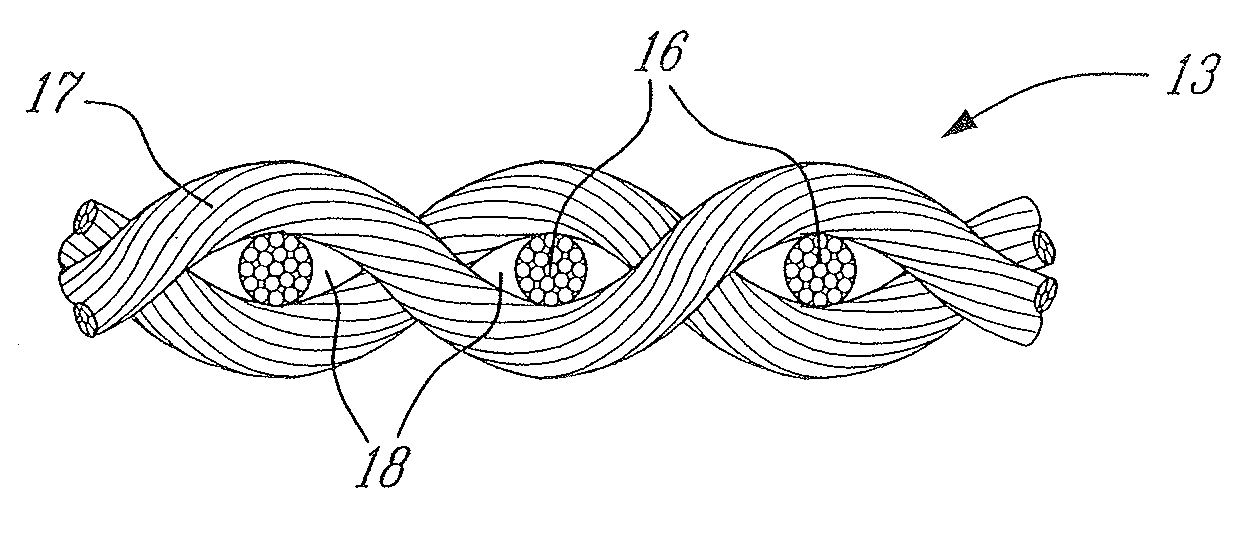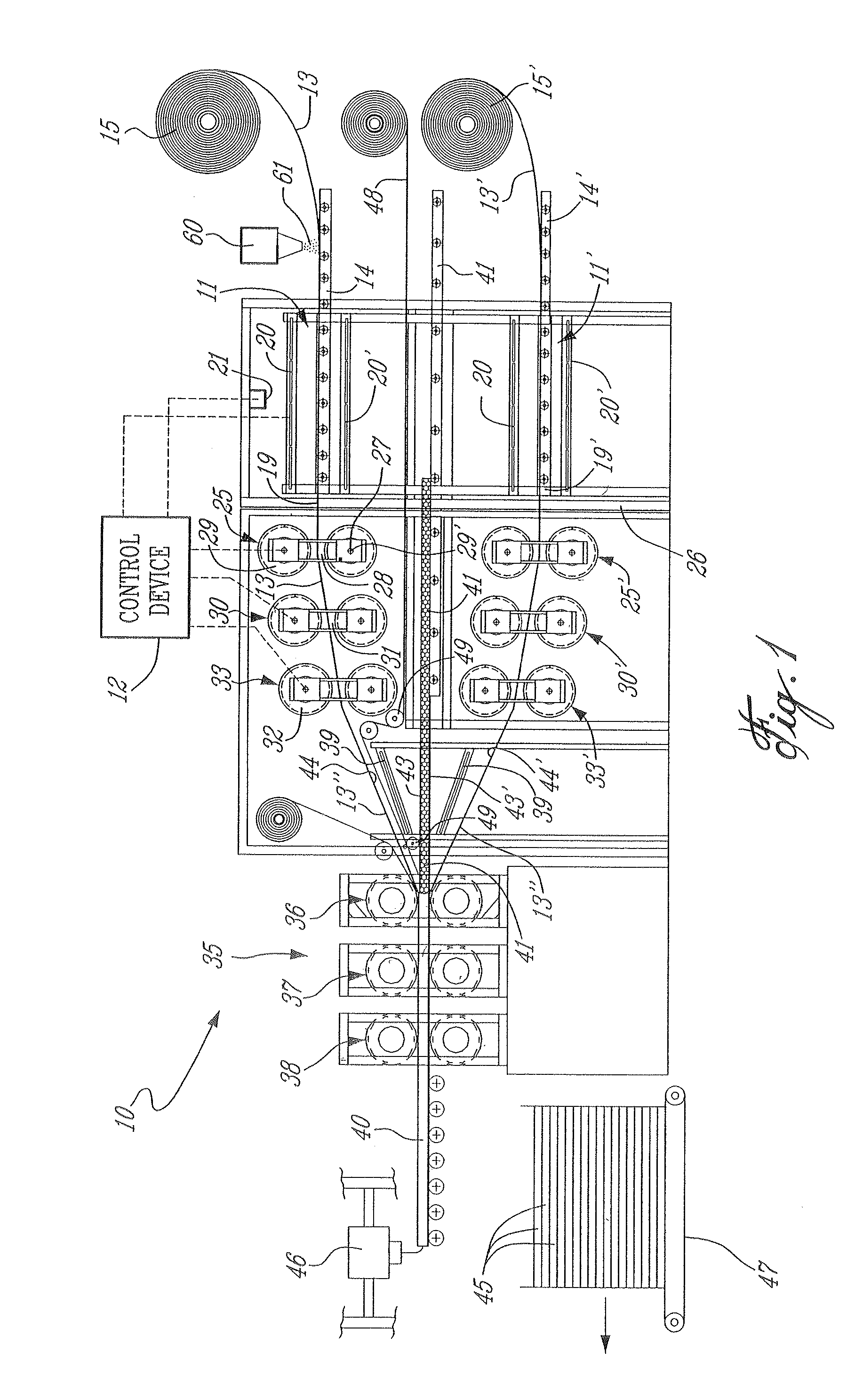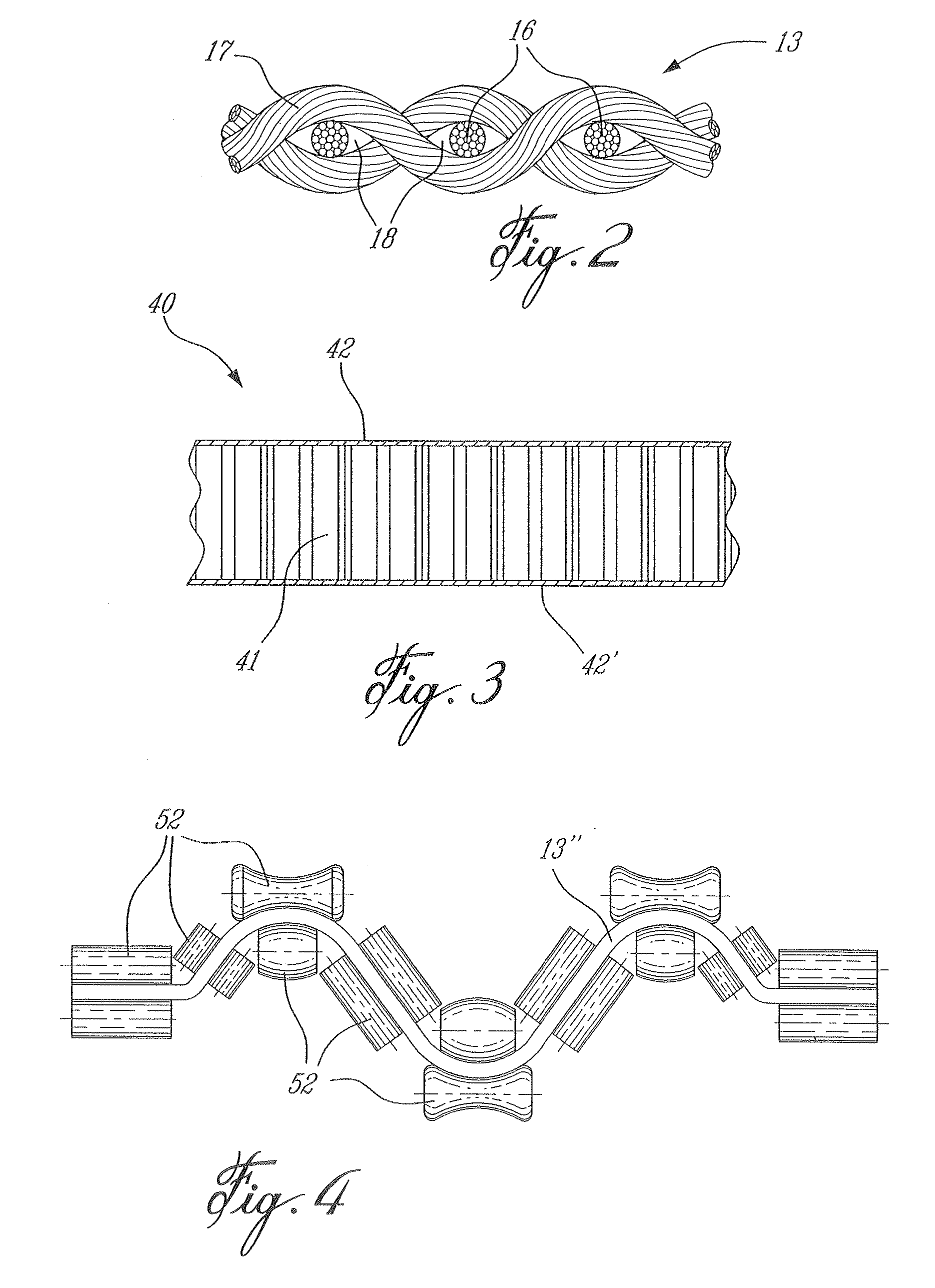Process for producing lightweight thermoplastic composite products in a continuous manner
a technology of thermoplastic composite products and manufacturing processes, applied in the direction of synthetic resin layered products, packaging, wood working apparatus, etc., can solve the problems of loss of strength, durability and appearance deterioration, damage to vehicles, injuring passengers, and having to be replaced, etc., to achieve the effect of reducing manufacturing costs, eliminating physical restrictions on mold and oven dimensions, and facilitating the production of desired products
- Summary
- Abstract
- Description
- Claims
- Application Information
AI Technical Summary
Benefits of technology
Problems solved by technology
Method used
Image
Examples
Embodiment Construction
[0016] Referring now to the drawings and more particularly to FIG. 1, there is illustrated at 10 the machine of the present invention for the production of lightweight thermoplastic composite products in a continuous manner. The machine comprises at least one heating oven 11 and there is herein illustrated two such ovens 11 and 11′ when fabricating a sandwich product 40 as illustrated in FIG. 3. A controller device 12 controls the temperature of the ovens 11 and 11′. Dry unconsolidated commingled fabrics 13 and 13′ are fed to their respective ovens 11 and 11′ by suitable feed means. As hereinshown, the commingled fabric sheets 13 and 13′ are guided in their respective ovens 11 and 11′ on roller conveyors 14 and 14′, respectively. Such fabric 13 and 13′ may be unwound from supply rolls 15 and 15′, respectively. It may also be provided in very long sheet form.
[0017] As shown in FIG. 2, the fabric sheets 13 and 13′ are comprised of dry unconsolidated commingled fibers of thermoplastic...
PUM
| Property | Measurement | Unit |
|---|---|---|
| temperature | aaaaa | aaaaa |
| melting point | aaaaa | aaaaa |
| melting point | aaaaa | aaaaa |
Abstract
Description
Claims
Application Information
 Login to View More
Login to View More - R&D
- Intellectual Property
- Life Sciences
- Materials
- Tech Scout
- Unparalleled Data Quality
- Higher Quality Content
- 60% Fewer Hallucinations
Browse by: Latest US Patents, China's latest patents, Technical Efficacy Thesaurus, Application Domain, Technology Topic, Popular Technical Reports.
© 2025 PatSnap. All rights reserved.Legal|Privacy policy|Modern Slavery Act Transparency Statement|Sitemap|About US| Contact US: help@patsnap.com



